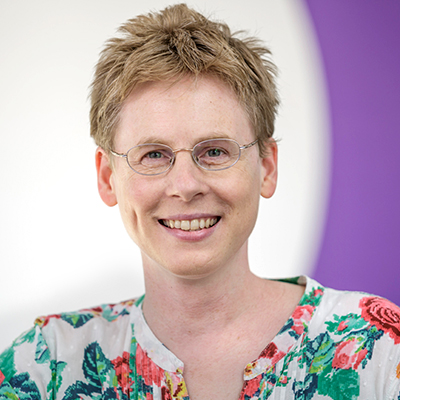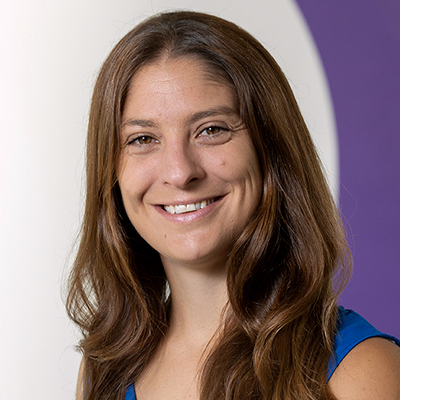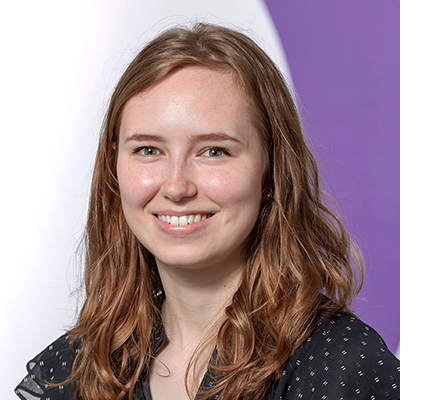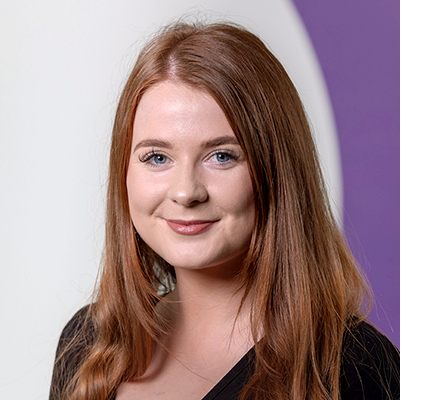Women in innovation: Design & Research
Women play a crucial role in innovation and business success at CDP. We’re proud of the critical contribution made by our women colleagues, who lead in diverse areas of innovation including design, research, science, technology, engineering and human factors.
In this first interview of Women in Innovation series, we talked to four of our leaders working in the design and research field. Thanks to Nicki, Martha, Millie and Clodagh for sharing their stories.
Nicki Sutton | Senior Innovation Consultant

My primary role is generating insights for innovation and design through immersive and exploratory research. That insight or opportunity specification forms the basis for early-stage concept generation and it’s always important for the researchers to be in the room when that happens. It means they represent the users, customers or wider stakeholders and ensure that their needs are being translated correctly into design and design attributes.
Does being a female researcher give you different perspectives from a male researcher in the same position?
Honestly, and speaking just personally, I don’t think so. I believe any good researcher should be able to cross divides such as gender, age, culture, etc., to empathize with the challenges that individual groups can face. Of course, some subject matters are quite gender based, where one gender may have a very different experience from the other, or not have the experience all! For example, at CDP, we’ve worked on condoms, sex toys, body hair removal and femcare, however we’ve always had mixed gender teams on those projects. Perhaps the women were a little further up the experience curve on some of the insight, but I don’t think the guys were held back!
Have any female mentors supported you through your career?
Not really. My university courses and the companies I’ve worked for during most of my career have been mainly male dominated environments. Since joining CDP I’ve been among the most senior women employee-owners and so there has not really been much scope for female mentorship. However, I do get inspired by the work of other women in the company – in the ‘front end innovation’ team and the wider organization. I see some of the younger women – researchers, strategists, designers, engineers – and I’m in awe of their sheer talent and confidence! I definitely think that our education system, at both school/college and university level, better prepares you for life in the commercial world compared to when I was passing through it!
Do you have any design heroes that you look up to?
As someone who sits at the insight end of design, I couldn’t possibly answer this question without mentioning Clay Christensen; the founding father of disruptive innovation and Jobs to be Done (JTBD). Indirectly, he has been as influential on my career as anyone. JTBD has been at the center of my work for the last 13 years. It’s now a mainstream innovation perspective, but it was still in its relative infancy when I was introduced to it. Focusing on the jobs that people want to get done in their lives as the input to design and innovation seems very obvious now, but when jobs thinking arrived, we lived in a very product-centric research world. Companies believed that users and consumers were too difficult to understand – saying one thing and doing another – so they just didn’t bother with research or research was ‘market research’ into products already launched. Today we live in a different world of design and innovation. One in which jobs, not products, are the driving force of progress.
Martha Hodgson | Market & Design Insights Research Consultant

My passion is design research: gaining an in-depth understanding of the stakeholder, whether that’s the end user, the commercial sponsor or the key decision maker who sits within a supply chain. Uncovering and understanding unmet needs are at the heart of creating meaningful and effective innovation.
Does being a female designer give you different perspectives from a male designer in the same position?
Being a female can help in understanding some specific contexts -for example, femcare– but I believe what makes a good design researcher is your ability to semi-detach yourself personally and empathize with the context and end-user audience that you are designing for.
Do you think being female has any relevance to how you approach your work?
I think I approach design differently to any other women or men because of the unique journey I have taken to get to where I am today. My approach at work is shaped by my empathy and my understanding of others. I also believe that starting my career as a designer has shaped the innovator I am today and enables me to help improve lives through innovation. It provided me with a way of looking at the world, asking the right questions, interpreting what I see and hear, and making new connections that have led to uncovering new opportunities. It is the combination of characteristics, values, skills and capabilities that is each of our differentiators.
Have any female mentors supported you through your career?
Yes, I’ve had incredible women mentors, and at the same time, I’ve also had excellent men mentors. I consider myself very lucky to have different role models throughout my life and career, and there have always been strong female leaders in the places where I have worked.
Do you have any design heroes that you look up to?
No ‘heroes’ as such! I admire many examples of achievement in many forms where someone has been driven by passion, gumption, determination and a lot of hard work! I follow a group called The Female Lead on LinkedIn, which I find very inspirational – it showcases and celebrates female success, and the many forms it can take.
Millie Ashton | Industrial Designer

Ever since I was a small child I’ve had a passion for design – I’ve spent many hours designing Lego houses, ceramic animals and 3D printed plant pots to name a few examples. Being able to turn a nebulous idea into a tangible 3D object never fails to excite me, and the fact that I’ve been able to pursue a career in it makes me feel extremely lucky. I’m grateful that my role provides me with the opportunity to help people and bring joy to them through my designs. There’s great satisfaction in creating solutions that have the potential to improve people’s everyday lives.
Does being a female designer give you different perspectives from a male designer in the same position?
I’d like to think that there aren’t many disparities between men and women in our perspectives or design approach. However, it’s difficult to deny that being a woman means you naturally have a perspective that just over half the world’s population doesn’t have – this is invaluable and allows me to use that empathy to tackle problem solving. We take pride in creating design that is centered around user insight, which is key to producing a successful solution for all gender identities. As a woman, I can come up with ideas and new ways of thinking that my male counterparts may not have, and challenge society’s norm of designing for the average adult male.
Do you think being female has any relevance to how you approach your work?
Yes, at CDP I always try to bring a fresh mindset and perspective to problems. As one of the youngest designers in the design team, I enjoy challenging and questioning design norms, as well as keeping a finger on the latest product trends. As the only female member of the Industrial Design team, I try to bring female insight into the products we design and ensure we’ve considered how other genders might use the product differently. I also feel it’s essential to design for future generations, considering how a product’s life cycle will impact the planet in years to come.
Have any female mentors supported you through your career?
Throughout my education and career, many of my peers and lecturers have been male. I didn’t have a female mentor at university, but I wish there had been more female role models to look up to. It has been refreshing at CDP to witness more women joining the company and being promoted into senior positions and hopefully female mentorship in design is something that will continue to be improved upon in time, as more women take up roles in the design industry.
What would you want to say to the design industry or anyone thinking of working in design?
My biggest tip would be this: don’t be afraid of failure or rejection. What you may think is a stupid or crazy idea might turn out to be ingenious. If you love designing things, don’t let self-doubt get in your way – passion often leads to success, and saying yes to new opportunities is vital when starting out. Never stop learning or assume you know everything, and ensure you get as much design related work experience or internships as you can, to figure out your niche.
Clodagh Hogan | Human Factors and Usability Engineer

My background is in pharmaceutical chemistry, but I moved into the medical device design world so that I could bring my hands-on design skills and scientific background to people-centered design. I’ve always loved being able to turn an idea into a physical object and working in design allows you to be creative every day.
Does being a female designer give you different perspectives from a male designer in the same position?
No. How I approach a design challenge is based on my mindset, creativity, experience and style of problem solving. I work with multiple designers and we all have different perspectives and different skillsets, but this is down to the fact we are different people, not that we are different genders. If men were asked to list the benefits of being a man in design, it wouldn’t be something that I’d want to read and I’d take it as a negative dig towards women. I believe in equality, which means we must recognize that different people have different skills and that gender doesn’t really play a role in it at all.
Based on your experience, what are the top challenges you have faced as a woman working in innovation?
The biggest challenge I face as a woman in innovation is this assumption that I face challenges because I am a woman. I am lucky to be at an early stage in my career while things are actively changing, and it will only get better as time goes on, but change cannot happen overnight. In the near future, I hope that questions like this are no longer asked because we will be living in a world where people no longer assume that women face challenges just because they are women.
Do you have any design heroes that you look up to?
I don’t have any one specific design hero, but there are many graphic designers, illustrators, typographers, UX designers and product designers that I spend a lot of my spare time following and getting both motivation and inspiration from.
What would you say to the design industry and future woman and men that would like to work in design?
I would say that if you are interested in design, then pursue it and don’t let whether you are male or female get in your way. If you are a woman starting out, you will see that there is an imbalance. More women are taking up careers and education in design and STEM now, but it will take time for there to be balance. Know that you are starting your career during an exciting shift and that you are part of this important movement.
We hope to use these ideas and perspectives to inspire other women and girls to pursue a career in design and innovation. Our women designers add enormous value to our projects and team, and we believe it’s essential to celebrate this diversity. In our next blog we’ll share more stories of Women in Innovation, here at CDP.